|
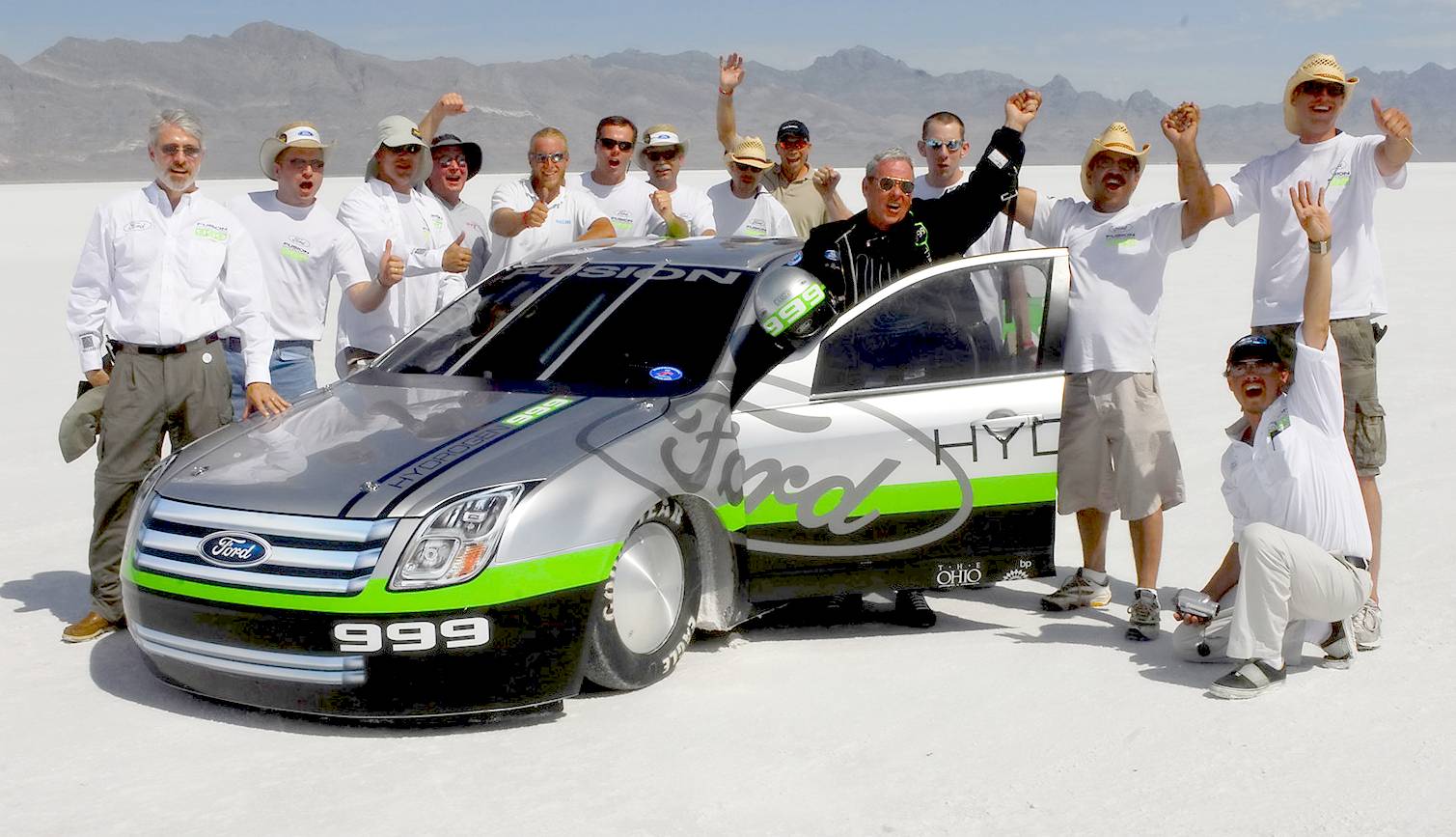
A hydrogen vehicle is a vehicle that uses hydrogen fuel for motive power. Hydrogen vehicles include hydrogen-fueled space rockets, as well as automobiles and other transportation vehicles. The power plants of such vehicles convert the chemical energy of hydrogen to mechanical energy either by burning hydrogen in an internal combustion engine, or, more commonly, by reacting hydrogen with oxygen in a fuel cell to run electric motors. Widespread use of hydrogen for fueling transportation is a key element of a proposed hydrogen economy.
AUGUST 2007
Fordís fuel cell research team will put the Ford Fusion Hydrogen 999, the worldís first and only production car based fuel cell race car, to the ultimate test during Speed Week, Aug. 10-17, at the famous
Bonneville Salt Flats in Utah. After more than one year of design and development and 10 years of hydrogen vehicle research, Ford hopes to set the first land speed record for a fuel cell vehicle based on a production car. The
Ford Fusion Hydrogen 999 is Fordís latest environmental innovation and is another step on the road toward commercially viable hydrogen fuel cell vehicles.
The Ford Hydrogen 999ís exterior looks like a standard Fusion with a few key differences. Itís more aerodynamic, lower to the ground, has no side mirrors and lacks a grille to let air in, because there is no radiator. At approximately 6,700 pounds with driver and a fully loaded cooling system, itís about twice as heavy as a normal Fusion for the sake of stability.
FORD
PRESS RELEASE - FORD SETS LAND SPEED RECORD WITH FORD FUSION HYDROGEN 999 FUEL CELL RACECAR
Ford Motor Company made history today by reaching 207.279 mph with the Ford Fusion Hydrogen 999, the
world's first production-based hydrogen fuel cell race car.
The Ford Fusion Hydrogen 999 is
Ford's latest environmental innovation, another step on the road toward commercially viable hydrogen fuel cell vehicles.
The car was designed and built by Ford engineers in collaboration with Ohio State University, Ballard Power Systems and Roush.
WENDOVER, Utah, August 16
Ford Motor Company [NYSE: F] today became the world's first automaker to set a land speed record for a production-based fuel cell powered car. The Ford Fusion Hydrogren 999 fuel cell car raced to 207.297 mph at the Bonneville Salt Flats in Wendover, Utah to set the record.
The Ford "999" is the world's first and only production vehicle-based fuel cell race car. It was built in collaboration with Ballard Power Systems, Roush and Ohio State University and is one of two vehicles demonstrating the potential of fuel cell technology. Ford researchers also are supporting student engineers from Ohio State University on its Buckeye Bullet 2, a streamliner-type fuel cell-powered racer attempting 300+ mph.
What we've accomplished is nothing short of an industry first, said Gerhard Schmidt, vice president, Research & Advanced Engineering for Ford Motor Company.
No other automaker in the world has come close. We are excited to have accomplished something never before done. We established this project to advance fuel-cell-powered vehicles and to do what has never been done before; and we did
it.
Schmidt said Ford's historic run at Bonneville will further expand the company's technological horizons with fuel cell-powered vehicles, because the use of hydrogen as a fuel could someday play a key role in meeting the energy needs of the transportation sector. The Ford Fusion Hydrogen 999 is
Ford's latest environmental innovation and is another step on the road toward commercially viable hydrogen fuel cell vehicles.
The speed was reached during a run at the Bonneville Nationals, which are being held from Aug. 10-17.
The Ford Fusion Hydrogen 999 land speed record vehicle was designed by Ford engineers and built by Roush in Allen Park, Mich. Ford engineers leveraged the 2004
Buckeye Bullet's electric motor, while Ballard Power Systems supplied the 400 kW hydrogen fuel cells. Ford retiree Rick Byrnes, a veteran Bonneville racer, piloted the Ford Fusion Hydrogen 999 on its record breaking run.
Ohio State students have designed their streamliner, dubbed Buckeye Bullet 2, from the ground up. Ballard donated the hydrogen fuel cells for Ohio
State's car, Roush its engineering services and Ford has provided overall project coordination and expertise in
fuel cell drivetrains.
In 2004, Ohio State students set the unlimited land speed record for an
electric vehicle by running 314 mph in the first Buckeye Bullet, dubbed BB1.
Ford Fusion Hydrogen 999 Part of a Broader Effort
The Ford Fusion Hydrogen 999 shows one of the ways Ford is advancing environmental innovation with the goal of offering vehicles with zero impact on the environment. Multiple technologies, including hydrogen fuel cells, hybrids, E85 ethanol, clean diesels,
bio-diesels, advanced engine and transmission technologies allow a flexible approach that balances customer needs, environmental impact and shareholder interests.
Ford Motor Company currently has a fleet of 30 hydrogen-powered Focus fuel cell vehicles on the road as part of a worldwide, seven-city program to conduct real world testing of fuel cell technology. The 30-car fleet has accumulated nearly 580,000 miles since its inception in 2005.
Ford also is conducting tests with the world's first plug-in hybrid electric vehicle, the Ford Edge with HySeries Drive. The Ford Edge with HySeries Drive uses a series electric drivetrain with an onboard hydrogen fuel cell generator to give the vehicle a range of 225 miles with zero emissions.
Ford currently offers gasoline-electric hybrids including the Escape Hybrid and Mercury Mariner Hybrid. The company will also offer hybrid versions of the Ford Fusion and Mercury Milan in 2008.
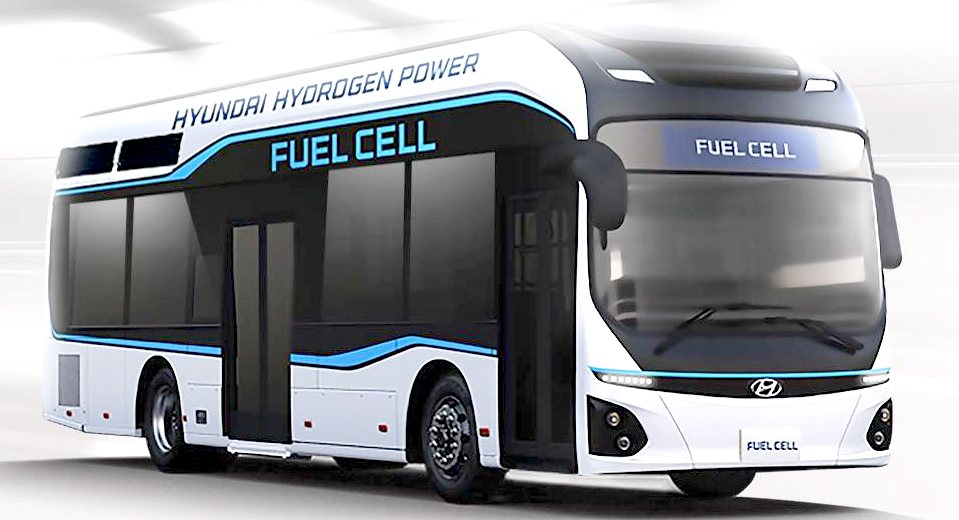
PRODUCING
THE HYDROGEN
As of 2019, 98% of
hydrogen is produced by steam methane reforming, which emits carbon
dioxide. It can be produced by thermochemical or pyrolytic means using renewable feedstocks, but the processes are currently expensive. Various technologies are being developed that aim to deliver costs low enough, and quantities great enough, to compete with hydrogen production using natural gas.
The drawbacks of hydrogen use are high carbon emissions intensity when produced from natural gas, capital cost burden, low energy content per unit volume at ambient conditions, production and compression of hydrogen, the investment required in filling stations to dispense hydrogen, transportation of hydrogen to filling stations and lack of ability to produce or dispense hydrogen at home.
A
way forward is using electrolysis to split water into hydrogen and oxygen, using
renewable
solar and
wind
energy.
LINKS
& REFERENCE
http://www.seriouswheels.com/cars/top-2007-Ford-Fusion-Hydrogen-999-Land-Speed-Record.htm
https://fareastgizmos.com/other_stuff/ford_fusion_hydrogen_999_aims_for_land_speed_record.php
http://www.h2v.eu/
https://en.wikipedia.org/wiki/Hydrogen_vehicle
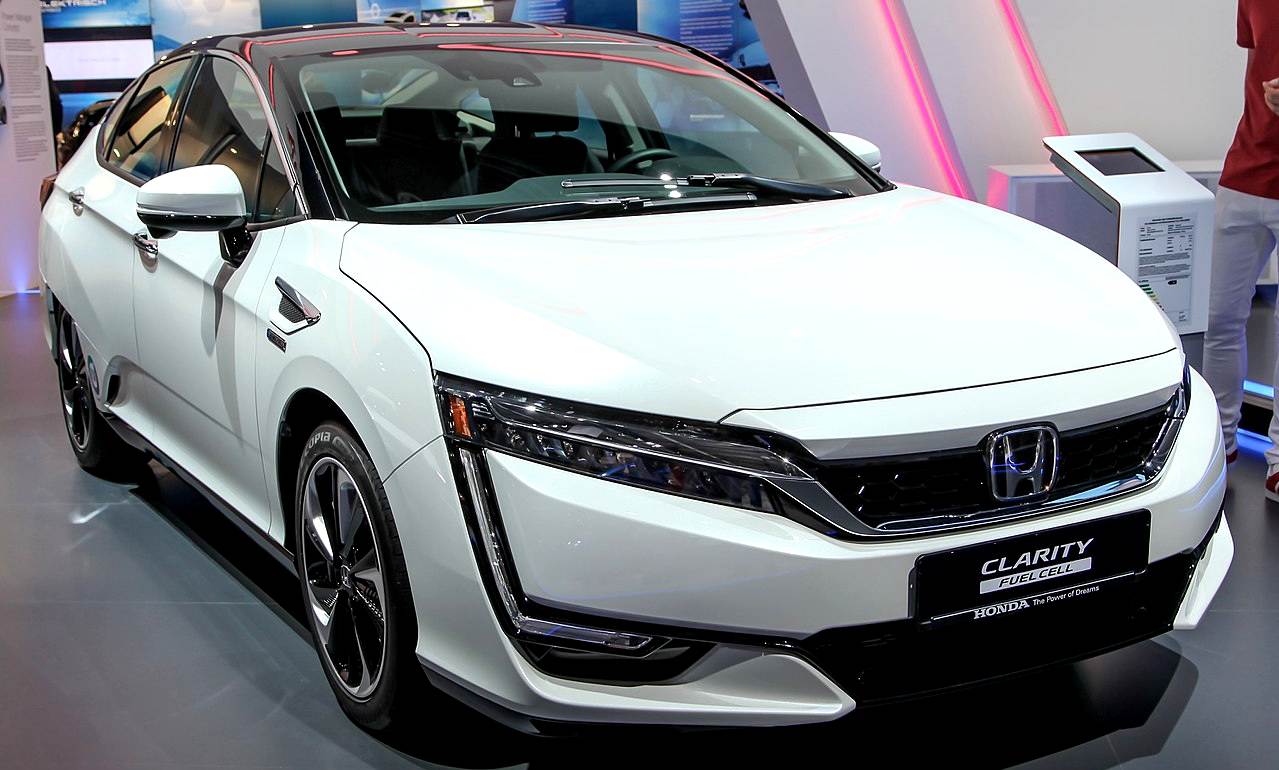
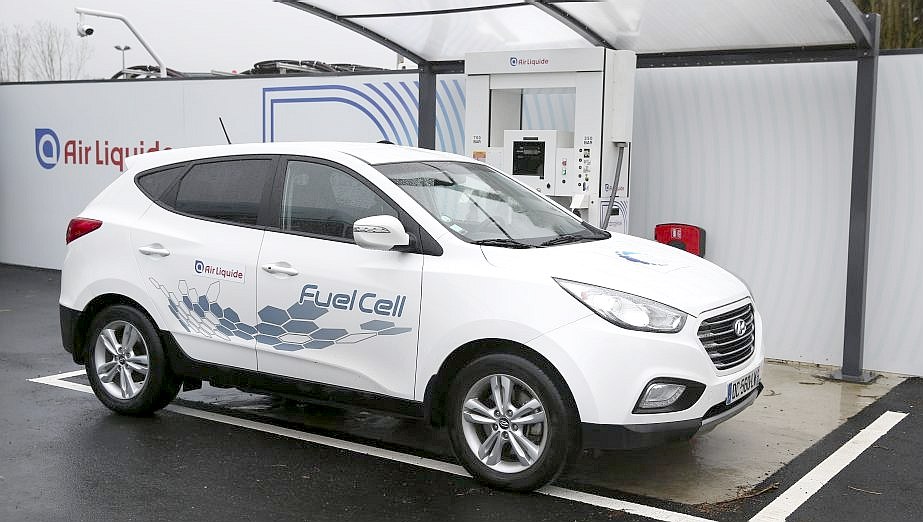
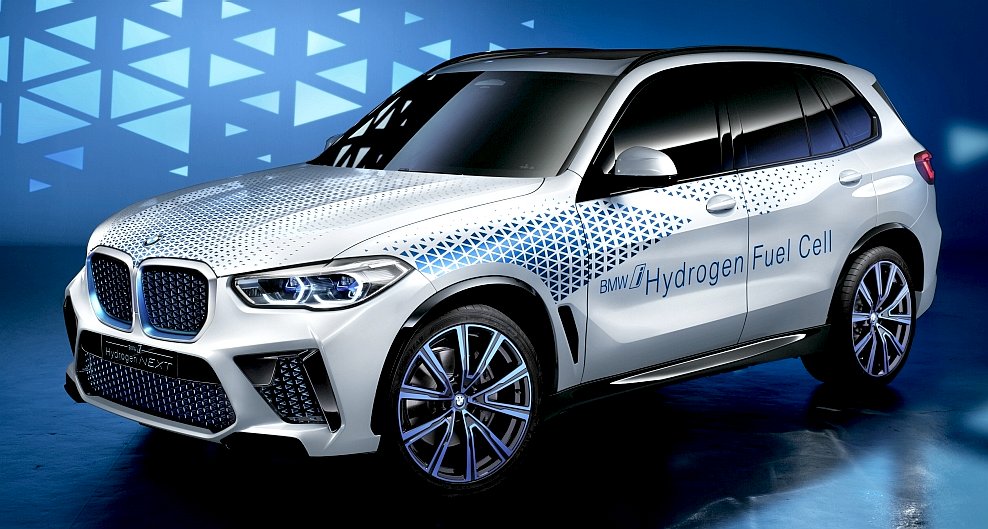
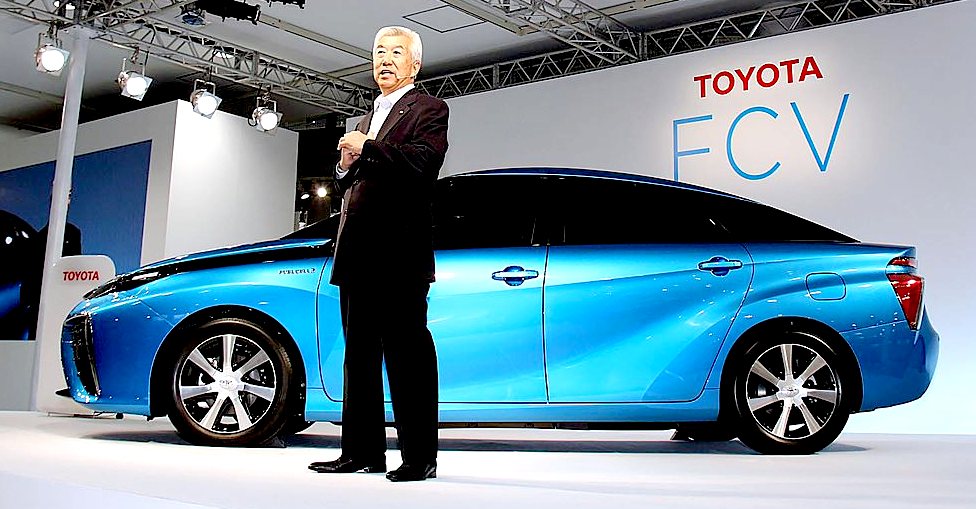

HYDROGEN
FILLING
STATIONS
- There is nothing wrong with this scenario except that it means
dedicated hydrogen service stations and dedicated hydrogen powered
electric vehicles - with no chance of changing technology, to and from
batteries, as technology develops. The buying public is therefore at
risk of losing their investment, as if they were
putting
all their eggs in one basket, when
there is no need for that.
|





